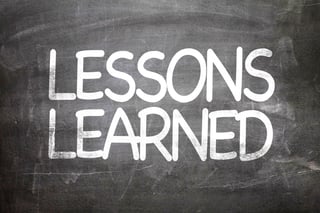The Day You Lost 20% of Your Manufacturing Capacity
The chemical industry executive turned slightly pale for a moment at 10:52pm on a Wednesday  night. He just finished a challenging call with his Vice President of Supply Chain Management based in Asia who informed him that their primary contract manufacturing organization (CMO) supplier was going out of business because the Chinese government was taking over their building and land to build a park. Apparently this is now a common practice as the government puts into play plans to address pollution and smog. The production was going to cease within a month leaving the chemical company almost no time to find a viable solution to produce the tons of their products that have already been sold to their customers. In the span of a 15 minute conversation, the company had just lost 20% of their manufacturing capacity.
night. He just finished a challenging call with his Vice President of Supply Chain Management based in Asia who informed him that their primary contract manufacturing organization (CMO) supplier was going out of business because the Chinese government was taking over their building and land to build a park. Apparently this is now a common practice as the government puts into play plans to address pollution and smog. The production was going to cease within a month leaving the chemical company almost no time to find a viable solution to produce the tons of their products that have already been sold to their customers. In the span of a 15 minute conversation, the company had just lost 20% of their manufacturing capacity.
A scenario from a Harvard Business School case study? A “wobbler” from one of Advantexe’s Business simulations? No! This was a real life scenario that recently happened to one of our clients.
However, there was no panic, and their world wasn’t going to end. Because the executive and his leadership team has developed strong business acumen skills through the power of practice, they were able to move quickly to develop a plan of action that would result in a solution that had minimal impact on their customers and their business.
This detailed contingency plan was the result of a learning and planning workshop that provided the leadership team with the opportunity to “play” and learn from different scenarios to expect the unexpected. Some of the key outcomes of this process are five key actions the leadership team took which were learned through the use of a computer-based business simulation planning workshop. We present and describe these positive actions and the amount of impact (in terms of replacement capacity) which was gained through the contingency planning process.
Step One: Increase shift of own plants
The first step the leadership team took was to increase the production and output of their own existing manufacturing facilities. While their own facilities were running well, they were able to add more capacity through extra hours and further process efficiencies. As a result, they were able to close the shortfall gap by 3%.
Step Two: Added three smaller manufacturing “tollers”
The second step was to find and negotiate new contract manufacturing organizations. Knowing that quality is an important metric, the organization already had a list of a few tollers who they could turn to in an emergency to pick up the slack. Because they have strong business acumen and negotiating skills, they knew the limits and impacts to profitability. Adding the smaller tollers reduced the shortfall gap by more than 5%.
Step Three: Raise prices on new business to reduce demand
The third step was a temporary measure to impact demand; raising prices on new business. The company implemented a 12% price increase for new orders so that they could reduce demand and increase the margin needed to make up for the loss and disruption of losing the primary contract manufacturer. The temporary increase in prices was estimated to reduce the shortfall gap by another 3%.
Step Four: Eliminate inventory build production
Part of the organization’s overall strategy is to produce and maintain small yet reasonable inventories on core products to serve existing and new customers. The company eliminated all production of extra inventory production. The tradeoff is that they lost potential sales and ran the risk of turning away additional customers, but they were able to reduce the shortfall gap by another 3%.
Step Five: Hold new product development prototyping
The fifth and final step was the temporary elimination of all production related to new product prototyping. A new product prototype is part of the sales process where the company was building and selling at a pilot cost a prototype of a new products. The tradeoff here is slowing down the sales process and potentially letting a customer walk away or go to another competitor. This action reduced the shortfall gap by another 6%.
In summary, although this organization had to make tradeoffs between short- and long-term impacts, their business acumen lesson served them well and they used the tools and skills to understand the best “levers” to pull that helped save the business. Take a moment to ask yourself the question of how would your company react in a similar situation?




